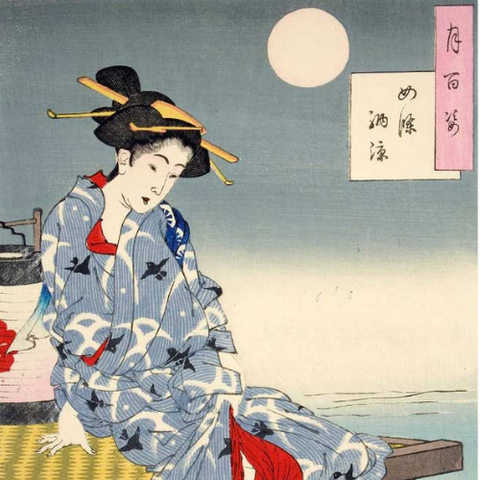M.S. Rau is committed to offering fine art of the highest caliber and we seek paintings and sculpture by historically renowned artists, often with impressive provenance. The large majority of our works of art come from private. . .
At M.S. Rau, we are committed to building a long-term, rewarding relationship with each and every client. That’s why your purchase is backed by our 125% guarantee.
Learn MoreEdo-period Green-Laced Samurai Suit
- This complete Edo-period samurai suit dates to the 17th century
- Housed in its original paulownia wood storage box, this rare suit is complete and pristine
- It is made of fine materials including lacquerware plates, russet iron, silk and copper
- It exemplifies the pinnacle of samurai armor design and craftsmanship
- Get complete item description here
To speak to one of our experts, call 1-888-711-8084
Japanese armor is striking, refined and highly functional, crafted using revered techniques that evolved over centuries. By the Edo period (1615–1868), armorers were regarded as artists, proudly signing their contributions. This particularly elaborate example was created for a young warrior as he entered the ranks of a prestigious samurai official. In traditional samurai families, boys began rigorous training at a young age, receiving their first wooden sword at around three. By twelve, they would undergo a coming-of-age ceremony and be presented with a suit of armor like this one, signifying their official entry into samurai-hood.
Housed in its original lacquered paulownia wood box, this rare suit is complete and in pristine condition, a remarkable feat. It was made by the Iwai school of armor-making and features the Ishikawa clan's heraldry. The Ishikawa clan hailed from the former fiefdom of Ishikawa (present-day Osaka) and later served under the Tokugawa Shogunate. Notably, the helmet is signed by Neo Masanobu, a highly renowned armorer of the late 16th and early 17th centuries. It has been cherished for generations and meticulously maintained. A document discovered within the left shoulder guard reveals the armor's last restoration in 1790 by another Iwai school armorer, showcasing the ongoing care it received throughout history.
Embodying the warrior spirit and Japanese prestige in every detail, this suit is truly astonishing. Please see the complete list of exceptional features of this rare suit of armor below.
17th century
Suit: 58" high x 25" diameter
Base: 14 1/2" high x 35" wide x 34" deep
This complete suit includes:
Helmet (kabuto): with the following:
Bowl top fitted with a six-tier tehen kanagu (ventilation fitting) of mixed soft metals
Turnbacks (fukigaeshi): small, each carrying the heraldry of the Ishikawa clan in shakudo
Peak (mabisashi): embossed with crisp eyebrows and wrinkles
Fore Crest (maedate): small, in the form of a full moon
Face Mask (menpo): with black lacquered iron in ressei (fierce) style with embossing around the mouth and cheeks, mustache applied with gold lacquer and red lacquer interior
Cuirass (do): made of lacquered (honkozane): (real scales), decorated in shakudo heraldry on breastplate and backplate
Shoulder protection (gyoyo): made of iron
Collar (erimawashi): made in the European style of domestic chirimen silk
Skirt (kusazuri): made of six sections, each with five lames of kiritsuke kozane, with a front section with small hanagami bukoro (pouch) made of imported woolen fabric for money and medicine
Shoulder guards (sode): made of kiritsuke kozane, each composed of seven lames and lined in purple silk
Sleeves (hyotan gote): made of corrugated iron gourd-shaped applications with kirigane (open-cut iron work) Ishikawa clan heraldry in twelve places
Thigh protection (haidate): made of black lacquered leather with overlapping scales
Shin Guards (shino suneate): made of black lacquered iron strips connected with chain mail
Entire armor lined with purple silk with Tokugawa clan heraldry in gold thread
Gloves (gunte) are original doe-skin, carrying the heraldry of the Ishikawa clan
Shoes made of hemp and chain mail, same weave as the sleeves
Straw sandals (waraji)

| Period: | 17th Century |
| Origin: | Asia |
| Type: | Arms and Armor |
| Depth: | 25.0 in. (63.5 cm) |
| Width: | 25.0 in. (63.5 cm) |
| Height: | 58.0 in. (147.32 cm) |

Masterful Craftsmanship: Your Guide to Japanese Artworks
Over the past two millennia of Japan’s history, the nation's ever-evolving artistic traditions remain a constant yet ever-changing thread. Of course, Japanese art has not remained static throughout its storied history. It has...
Read MoreAt M.S. Rau, we are committed to building a long-term, rewarding relationship with each and every client. That’s why your purchase is backed by our 125% guarantee.
Learn More


























